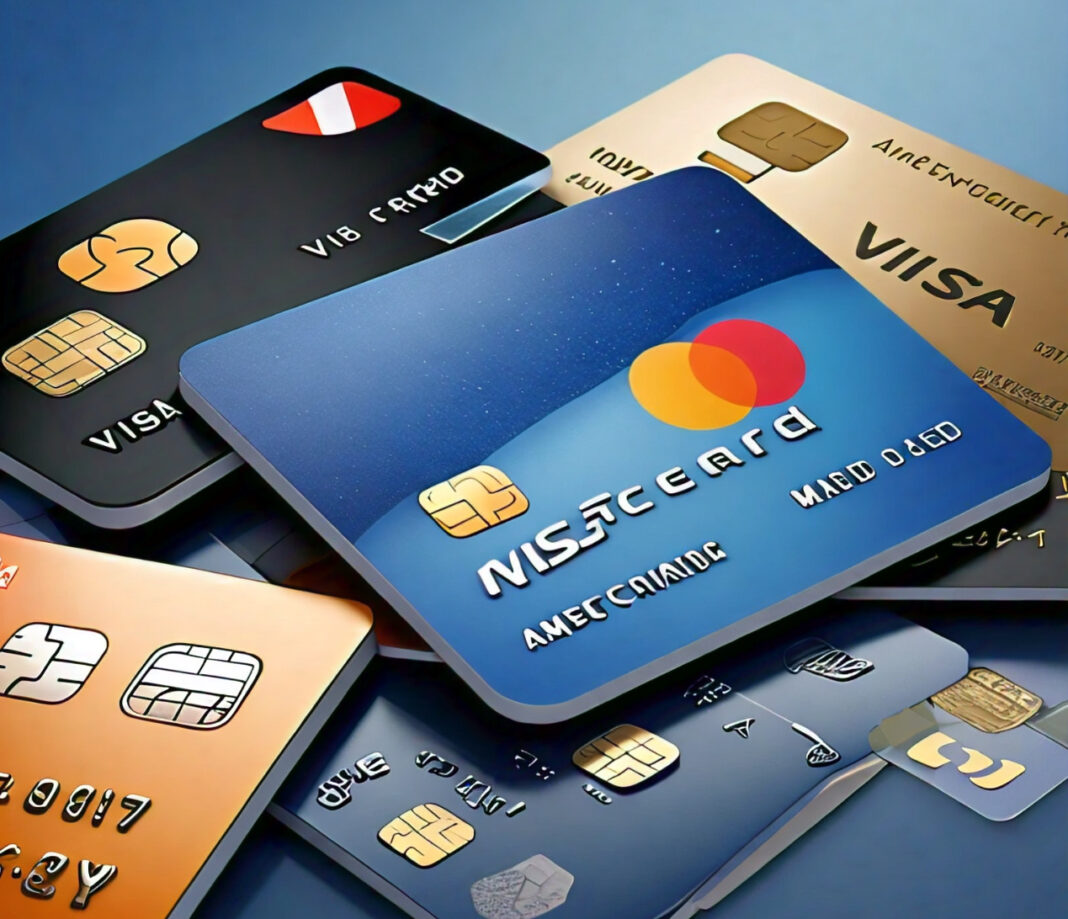Credit cards have become an inseparable part of modern financial life because of their convenience and flexibility in managing one’s expenses. One of the important aspects of credit card management that often comes into play is the issue of credit limit increase. Whether your card issuer offers this or you ask for it, a higher credit limit can have significant implications with regard to your financial health and score. How to make an appropriate decision in accepting or seeking a higher limit on your credit card is what this article discusses, presenting both the pros and cons of credit limit increases.

Understanding Credit Limits
Before going deep into the pros and cons, let us first elucidate what a credit limit is and how it works.
What is a Credit Limit?
The credit limit is the maximum amount of money you can borrow on a credit card or line of credit. Of course, it’s established by the lender based on certain factors that include your income, credit score, and credit history.
How Credit Limits Are Determined
For setting up or increasing your credit limit, credit card issuers take into consideration the following aspects:
- Income
- Credit score
- Payment history
- Length of credit history
- Existing debts
- Economic conditions
Knowing these factors can help you understand whether or not you will likely get approved for a credit limit increase and how it can impact your financial big picture.
Benefits of Credit Limit Increases
There are many great benefits that can come along with increasing your credit limit. Let’s look into some of the details.
1. Improved Credit Utilization Ratio
Probably the most important benefit that can come from a credit limit increase is the potential it has to improve your credit utilization ratio.
What is Credit Utilization?
Credit utilization is the amount of your available credit in use. To arrive at your credit utilization, one takes their current balances and divides them by their credit limits.
How a Higher Limit Helps
It works like this: your credit limit goes up, but the balance remains the same-your credit utilization ratio decreases. Example:
Before: $2,000 balance on a $5,000 limit = 40% utilization
-After: $2,000 balance on a $10,000 limit = 20% utilization
A low credit utilization ratio will help your credit score because you appear to use less credit out of what is available to you.
2. Increased Financial Flexibility
A higher credit limit provides a few ways of acquiring extra financial flexibility:
Emergency Fund Alternative
While always the best route, having a cash emergency fund, a higher credit limit can be useful when the situation gets really dire.
Large Purchases
A higher limit allows you to make larger purchases without maxing out your card or splitting the purchase across multiple cards.
Rewards Maximization
If you have a rewards credit card, a higher limit allows you to make more purchases, which may earn you more points, miles, or cash back.
3. Potential for Credit Score Improvement
Other than the credit utilization ratio, a credit increase can positively reflect on your credit score in the following ways:
Credit Mix
If it is a pretty huge increase, it can improve your credit mix by opening more revolving credit to you.
Long-term Credit History
Keeping such a card with a higher limit open for quite a long period may contribute to an excellent credit history.
4. Sign of Financial Health
Being offered an increase in credit limit is a good omen:
Confidence from Lenders
This means that your card provider thinks you are a good borrower.
Better Financial Standing
It often means you have improved financially through increased income or an improved score in credit ratings.
Disadvantages of Credit Limit Increase
While there are considerable advantages to increasing credit limits, some disadvantages must be considered.
1. Over-Spending
One of the most serious risks of a higher credit limit is the increased temptation to overspend beyond your means.
Lifestyle Inflation
The ease of having a higher limit may lead one to spend on unnecessary things or live a life that their resources cannot support.
False Sense of Financial Security
More available credit might make you feel more financially secure than you actually are and could result in making poor spending decisions.
2. Risk of Increased Debt
This means that with more credit available, there is a possibility of building up more debt.
Higher Minimum Payments
If you’re someone carrying a balance from month to month, then a higher credit limit can translate to higher balances, which in turn mean higher minimum payments.
Debt Snowball Effect
Ease in making larger purchases due to an increased credit limit can also create a snowball effect because debt may accumulate well before you can pay it off.
3. Impact on Future Loan Applications
While a higher credit limit is more advantageous to your credit score, it might actually hurt when it comes to future loan applications.
Increased Debt-to-Income Ratio
Lenders look at your debt-to-income ratio when evaluating a loan application. If you have a high credit limit, this means you have the potential to have more debt, which makes lenders wary about lending to you.
Perceived Risk
Some creditors might also perceive high credit limits as a risk, especially when one has several cards with high limits.
4. Risk of Dipping Credit Score
In some cases, it’s possible that a credit limit increase could actually decrease your credit score temporarily.
Hard Inquiry
When you request a credit limit increase, the credit card issuer may access your credit report with a hard inquiry, which can cause a slight, short-term decrease in your credit score.
New Account Effect
If you receive a new card with your credit limit increase, then it can impact your average account age and actually decrease your credit score.
- Risk of Account Closure
Ironically, not using your higher credit limit could put you at risk of account closure.
Inactivity Concerns
Card issuers may close accounts that are not in use, as those represent potential risk with no profit.
Regular Review
Issuers regularly review accounts and may lower limits or close accounts that are not active.
Keep the following in mind when deciding whether to accept an offered increase or to request an increase:
1. Your Spending Habits
Be honest with yourself about how well you really spend and budget money.
Questions to Ask Yourself:
Are you consistently able to pay your balance in full each month?
Have you ever had a problem not being able to control your spending in the past?
Do you have a budget that you actually use?
Assess your current financial situation objectively.
Key things to think about:
- Is your income stable or increasing?
- Do you have an emergency fund?
- Are you carrying balances on any other cards?
3. Your Credit Score and Report
Know what shape your credit is in today.
Things to Do:
- Check your credit score
- Look for mistakes on your credit report
- Evaluate current credit utilization on all cards
4. Your Future Financial Plans
Now consider how the increase in credit limit aligns with your future financial goals.
Places This Could Lead:
- Will you be applying for a mortgage in the near future?
- Are there large expenses you see in the near future?
- Are you working on paying off debt?
5. Terms of Increase
If this is an increase offered to you, be sure to consider the terms of that increase carefully.
Things to Look For:
- Is there a fee for the increase?
Does it create a hard inquiry in your credit report? Are there changes to interest rates or how rewards are calculated?
How to Responsibly Manage a Credit Limit Increase
If you determine that accepting or even requesting an increase in the credit limit is right for you, here are some suggestions for using it responsibly:
1. Stay within Your Budget
Just because your limit is higher doesn’t mean you should increase how much you spend. For most instances, continue to stick to the same budget and spending habits as before.
Also, keep an eye on your credit usage. It is always advisable to keep your credit utilization ratio under 30% for all of your cards combined.
3. Establish Personal Spending Limits
Even when the credit limit is rather high, set a personal spending limit that aligns with your financial goals.
4. Utilize Alerts and Tracking Tools
Also, most of the credit card issuuers offer alert systems and ways to track your spending. Avail that and maintain control or limit your expenditure.
5. Pay Your Balance in Full
Pay your full balance each month if possible, so as not to incur interest charges and collections.
6. Schedule a Checkup on Finances
Schedule a regular checkup on finances so that you may know whether or not using credit cards is hindering or helping you from your overall financial health and goals.
Conclusion
Credit limit increases can be a double-edged sword. While they do offer increased financial flexibility, the potential to improve credit scores, and some signal of trust from lenders, they also come with risks of overspending, increase in debt, and potential negative impacts on future loan applications.
The secret to handling a credit limit increase is to know how you stand with your money, be realistic about spending habits, and handle the increase responsibly. If you are offered a credit limit increase or are considering requesting one, take a moment to consider how it fits into the big picture of your finances.
Keep in mind that an increase in credit limit is a tool. Any financial tool will answer the question of its value based on how it’s used. Used wisely, it can add to your financial health and create new opportunity. Used recklessly, it’ll only lead to financial stress and increasing debt.
Whether to accept or apply for an increase in credit limit thus depends on one’s personal financial situation, goals, and level of financial discipline. Carefully weighing up the pros and cons that this article has presented, together with an honest assessment of your own situation, will ensure that you make a choice which aids your long-term financial health.






